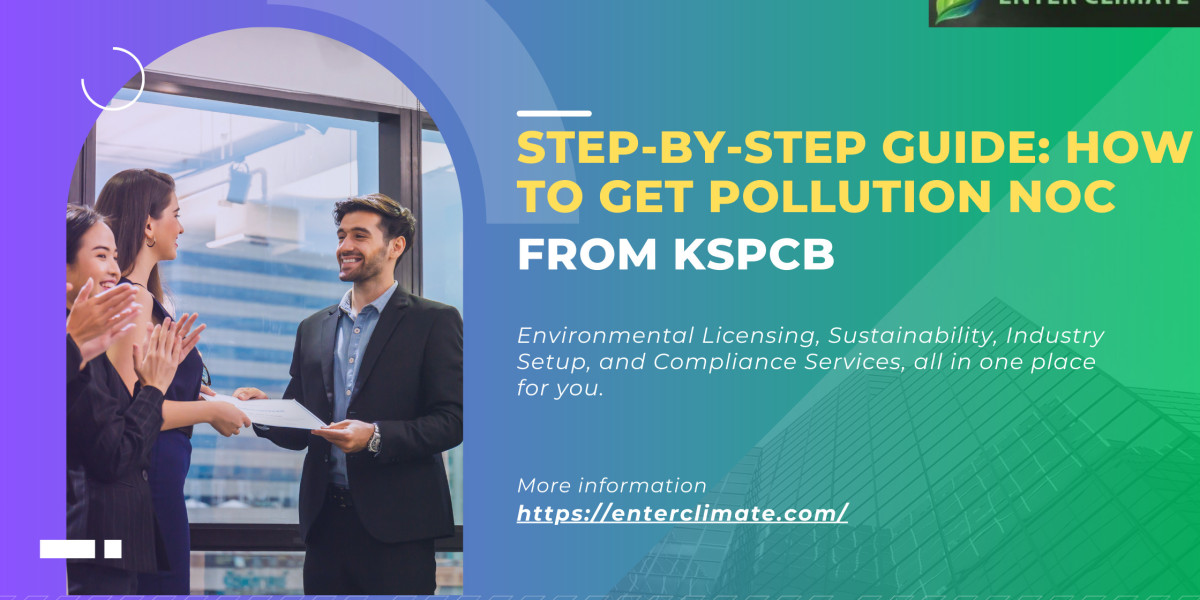1. Decide what you need: CTE or CTO
If you are setting up a new factory or plant, you need CTE — Consent to Establish.
If you are starting operations, or already built and ready but not yet running, you need CTO — Consent to Operate.
Sometimes if you already have CTE (or earlier NOC) and want to start operations, you directly apply for CTO.
2. Go to KSPCB’s online portal
The application for NOC (CTE/CTO) is now mostly online. In Kerala, this is handled through an online portal: Online Consent Management & Monitoring System (OCMMS).
First you need to register as a new industry / user on OCMMS — you will get a user ID and a temporary password.
On first login, you may reset password. Then you can submit application online.
3. Prepare required documents & information
KSPCB requires certain documents — put them in order before you start application.
Typical things you need to keep ready:
Identity proofs: PAN card and Aadhar card (or Voter ID) of the authorized person.
If the unit is a company/partnership: authorization letter / board resolution for the signatory.
Site plan / layout map: which shows buildings, roads, location of pollution control devices (like wastewater treatment plant, emissions stack, waste storage) and environmental measures.
Details about pollution control measures: plan for treating wastewater, air emissions, solid waste, hazardous waste (if any), disposal method etc.
Project cost / fixed capital investment proof (like CA certificate or investment certificate) — helps classify industry category.
Depending on your industry type, there may be extra documents (for example, if you produce hazardous waste, or biomedical waste, or effluent-generating waste, etc.).
4. Fill and submit the online application
Fill in details of your industry: name, address, type of industry, pollution sources (air, water, waste), type of chemicals or effluents (if any), machinery details, capacity, production process, etc.
Upload all the required documents in correct formats (scans, PDFs as per portal guidelines).
Submit the application. The portal will generate an application number — note it for future tracking.
5. Pay the fees
Pollution NOC applications have a processing fee. The fee depends on your industry’s category, size, capital investment, and pollution potential.
Payment is done online through the portal (or as per instructions). For late submissions (if consent not taken before construction started), there may be extra penalty charges.
6. Wait for scrutiny — and inspection
Once you submit, KSPCB staff will review your application and documents. They may ask for clarifications or additional information (via email or SMS).
If they approve documentation and pollution control measures, for CTO (i.e., before actual operation) you might get a site inspection — KSPCB may send inspectors to check whether your wastewater/effluent treatment plan, emission controls, waste disposal, etc. are implemented.
7. Get the NOC / Consent Certificate
If everything is fine — documents + inspection — then KSPCB will issue a Consent Certificate (NOC). This can be either CTE (for establishment) or CTO (for operation).
You get a copy — often a PDF/download from portal or from district office if asked.
Now you can legally build and / or operate your industry without fear of environmental violations.
8. Keep compliance & renew (if needed)
For many industries, NOC is not forever — if regulations require, you’ll need to renew Consent to Operate (CTO) after some years.
If there is a change (capacity increase, new machinery, more pollution etc.), you must inform KSPCB and get revised consent.
Also maintain proper waste disposal, emission control, water treatment — as per the conditions given in the NOC.
Why it matters — and why the NOC is important
It ensures that your industry doesn’t pollute the environment more than allowed — protecting air, water, soil, wildlife, and people.
It helps avoid heavy fines, legal action, or even forced closure by authorities.
It helps your business gain credibility — customers, banks, regulators, local community trust you.
It aligns with national & state environmental laws (air act, water act, waste management rules etc.) — good for sustainability and long-term operation.
Comparison with Other States / SPCBs
Because India is a big country — every state has its own Pollution Control Board (SPCB) or Pollution Control Committee (PCC). While the basic process is similar, there are small differences by state.
For example, Bihar State Pollution Control Board (BSPCB) — in Bihar — works similarly: industries must get NOC / Consent before establishing or operating.
Similarly, Rajasthan State Pollution Control Board issues NOC / consents for industries located in Rajasthan.
In southern India, states like Telangana also have their SPCB. For instance, Telangana State Pollution Control Board issues a “TSPCB NOC Certificate.” This is the equivalent of Kerala’s NOC for that state.
So, whether you are in Kerala (KSPCB), Bihar (BSPCB), Rajasthan (Rajasthan SPCB), Telangana (TSPCB), or some other state — the idea is same: get CTE before building, CTO before operating.
But always check their local website/portal for documents, fees, and application method because small rules change from state to state.
FAQs (Frequently Asked Questions — explained simply)
Q1. What if my business is small — do I still need NOC?
Yes — if your business can produce pollution (air, water, waste) or has risk of waste, you still should apply. SPCBs decide based on pollution potential (industry type, waste, emissions).
Q2. What happens if I start business without NOC?
That is risky — your business may be fined, forced to stop, or shut down. Legal action may be taken.
Q3. How long does NOC take to get approved?
It depends — usually after application and inspection, if all is fine it takes around 30 days (sometimes more, depending on how big or polluting your industry is).
Q4. Will KSPCB ever inspect my factory after permission?
Yes — inspection typically happens before issuing CTO (to operate). And sometimes periodic inspections may happen to check compliance with pollution control conditions.
Q5. If my industry is not polluting (like IT office), do I need NOC?
Maybe not. SPCBs classify industries by pollution potential — “Red, Orange, Green, White” or similar. Industries with little or no pollution risk sometimes are exempt or have simpler norms.
Q6. What if I want to expand later — do I need a new NOC?
Yes — if you increase capacity, add new machinery, or increase pollution — you must inform SPCB and apply for revised/updated consent.
Author Profile
Author: Environmental-Compliance Guide (written by me, your assistant)
Purpose: To help entrepreneurs, small-business owners, and industry planners understand — in simple language — how to get legal environmental clearance (NOC) from state pollution boards.
Source By:-https://differ.blog/p/step-by-step-guide-how-to-get-pollution-noc-from-kspcb-6486ec






